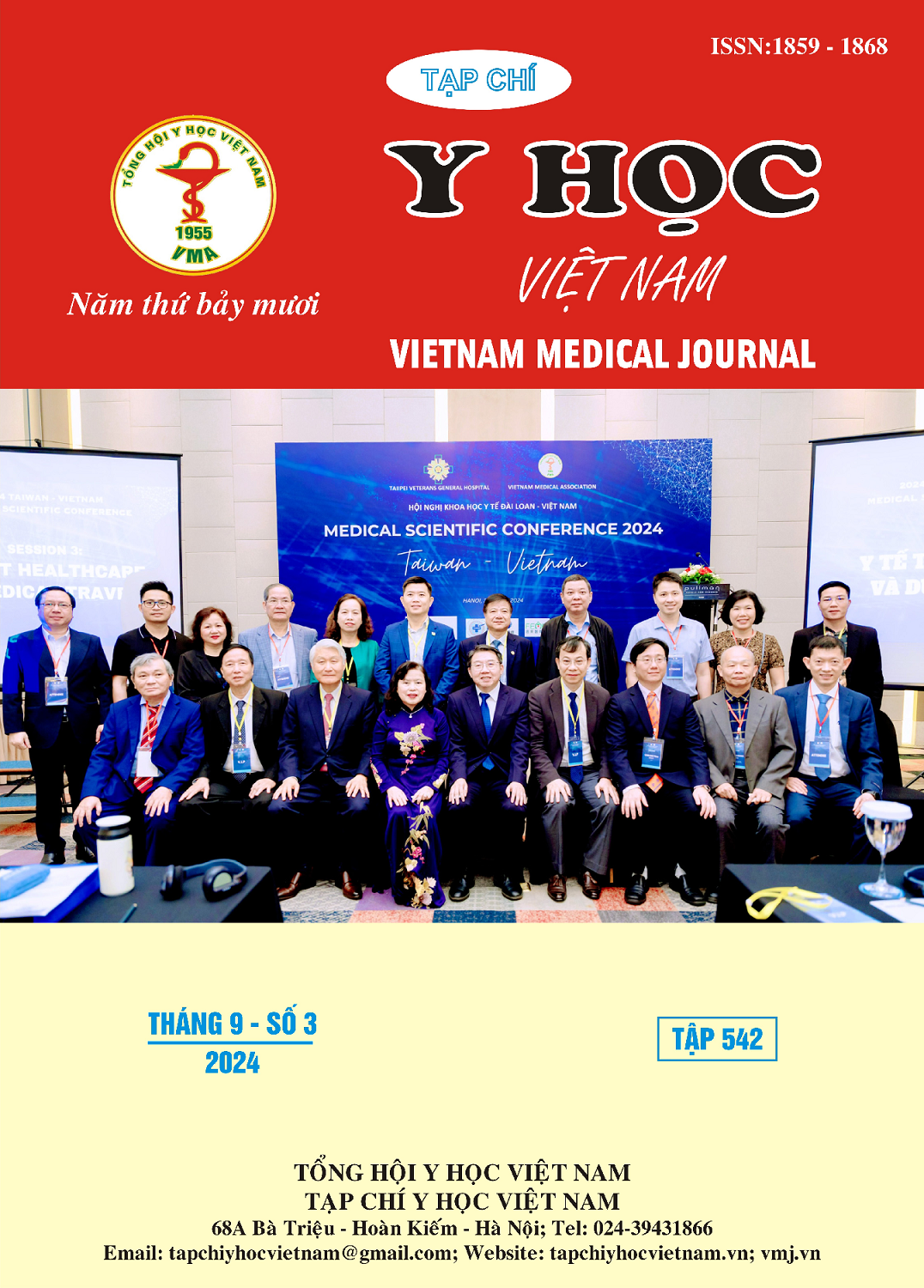ĐÁNH GIÁ KẾT QUẢ ĐIỀU TRỊ BỆNH NHÂN UNG THƯ SỐT HẠ BẠCH CẦU TRUNG TÍNH CÓ NHIỄM KHUẨN HUYẾT TẠI KHOA HỒI SỨC CẤP CỨU – BỆNH VIỆN K
Nội dung chính của bài viết
Tóm tắt
Mục tiêu: Đánh giá kết quả điều trị bệnh nhân ung thư sốt hạ bạch cầu trung tính có nhiễm khuẩn huyết. Đối tượng và phương pháp nghiên cứu: Nghiên cứu cắt ngang trên 44 bệnh nhân được chẩn đoán sốt hạ bạch cầu hạt trung tính có nhiễm khuẩn huyết từ tháng 10/2019 đến tháng 10/2020. Kết quả: 47,7% bệnh nhân phải điều trị đến phác đồ kháng sinh thứ 2 sau khi dùng kháng sinh theo kinh nghiệm ban đầu. 65,9% bệnh nhân khỏi bệnh, 34,1% bệnh nhân nặng lên không đáp ứng điều trị. Hầu hết bệnh nhân đều cần thay đổi phác đồ điều trị kháng sinh khi có nuôi cấy dương tính, các bệnh nhân có nuôi cấy âm tính chỉ phải dùng 1 phác đồ kháng sinh. Chỉ số bạch cầu trung tính thấp hơn (độ III, IV) hay chỉ số điểm SOFA cao hơn (SOFA ≥ 9 điểm) có tỷ lệ tử vong cao hơn có ý nghĩa, trong khi chỉ số procalcitonin đánh giá tình trạng nhiễm trùng không liên quan đến tỷ lệ tử vong. Kết luận: Phác đồ điều trị kháng sinh được thay đổi phù hợp với diễn biến và kết quả vi sinh. Tỷ lệ tử vong cao tới 34,1%. Người bệnh hạ bạch cầu nặng (độ III, IV) có tỷ lệ tử vong cao hơn nhóm còn lại. Người bệnh có mức độ suy tạng nặng (SOFA ≥ 9 điểm) có tỷ lệ tử vong cao hơn nhóm còn lại.
Chi tiết bài viết
Từ khóa
sốt hạ bạch cầu, ung thư, nhiễm khuẩn huyết.
Tài liệu tham khảo
2. Nguyễn Đạt Anh, Nguyễn Hồng Hà, Nguyễn Vũ Trung (2016). Hướng dẫn điều trị kháng sinh theo kinh nghiệm. Nhà xuất bản Y học
3. Phạm Thị Minh Đức (2011). Sinh lý học. Nhà xuất bản Y học, Tr.99-137.
4. Aapro MS et al (2011). Update of EORTC guidelines for the use of granulocyte - colony stimulating factor to reduce the incidence of chemotherapy - induced febrile neutropenia in adult patients with lymphoproliferative disorders and solid tumours. Eur J Cancer; 47(1):8-32
5. Gregory K Robbins (2019). Fever in the neutropenic adult patient with cancer.www. Uptodate.com
6. Klastersky J. et al on behalf of the ESMO Guidelines Committee (2016). Management of febrile neutropaenia: ESMO Clinical Practice Guidelines. Annals of Oncology, Volume 27, Issue suppl_5, September 2016, Pages v111-v118
7. Mervyn Singer, Clifford S. Deutschman et al - The Third International Consensus Definitions for Sepsis and Septic Shock (Sepsis-3) - JAMA. 2016;315(8):801-810
8. Rhee C et al. Incidence and trends of sepsis in US hospitals using clinical vs claims data, 2009- 2014. JAMA 2017 Oct 3; 318:1241
9. Viscoli C, Bruzzi P, Castagnola E, et al. Factors associated with bacteremia in febrile, granulocytopenic cancer patients. Eur J Cancer 1994;30A:430–7


